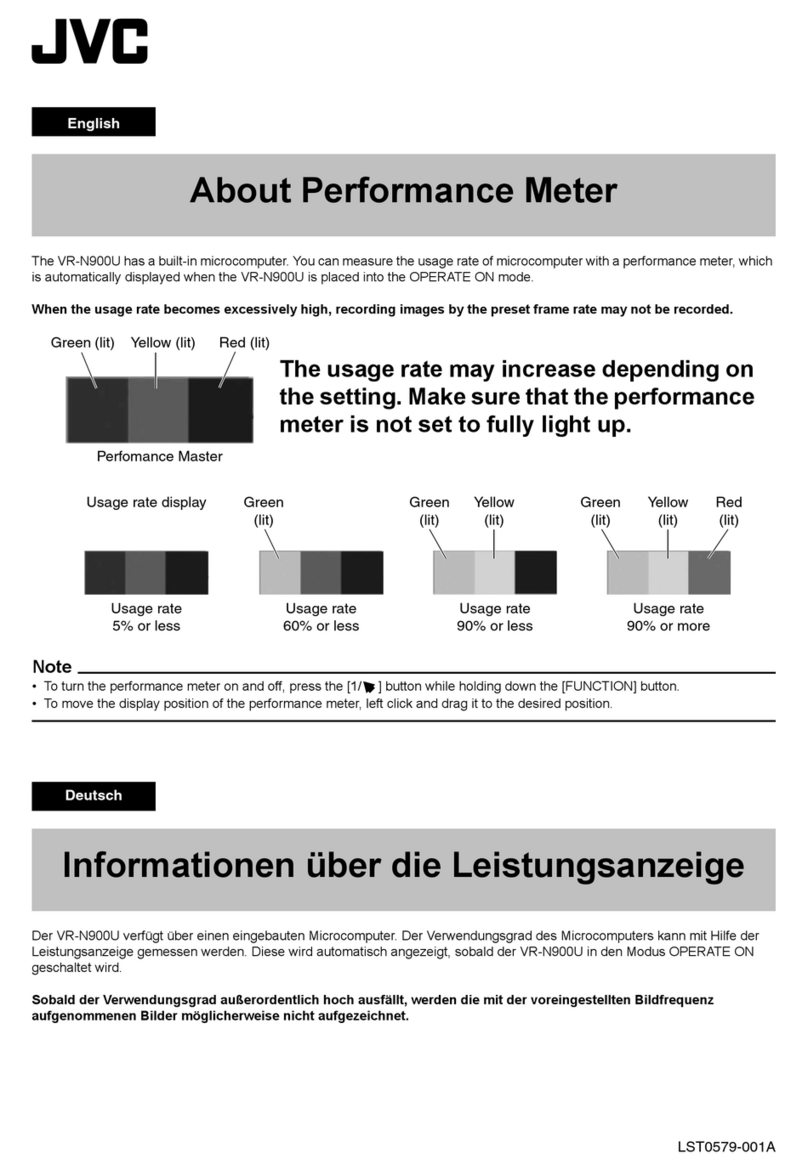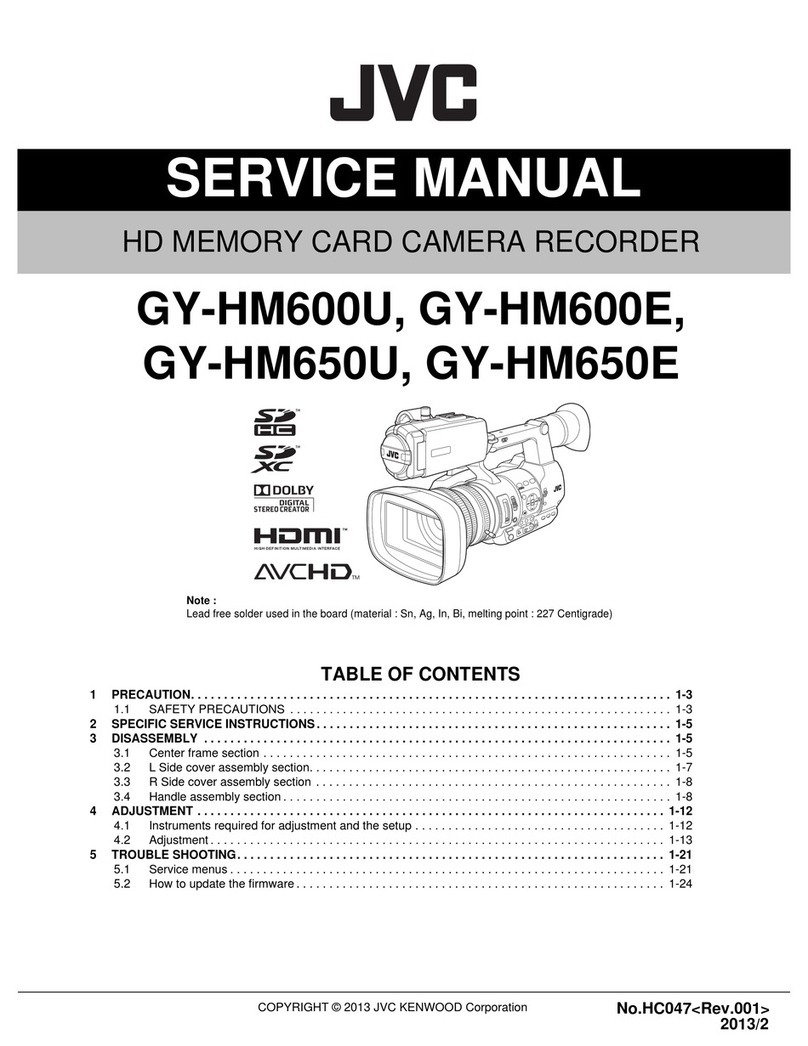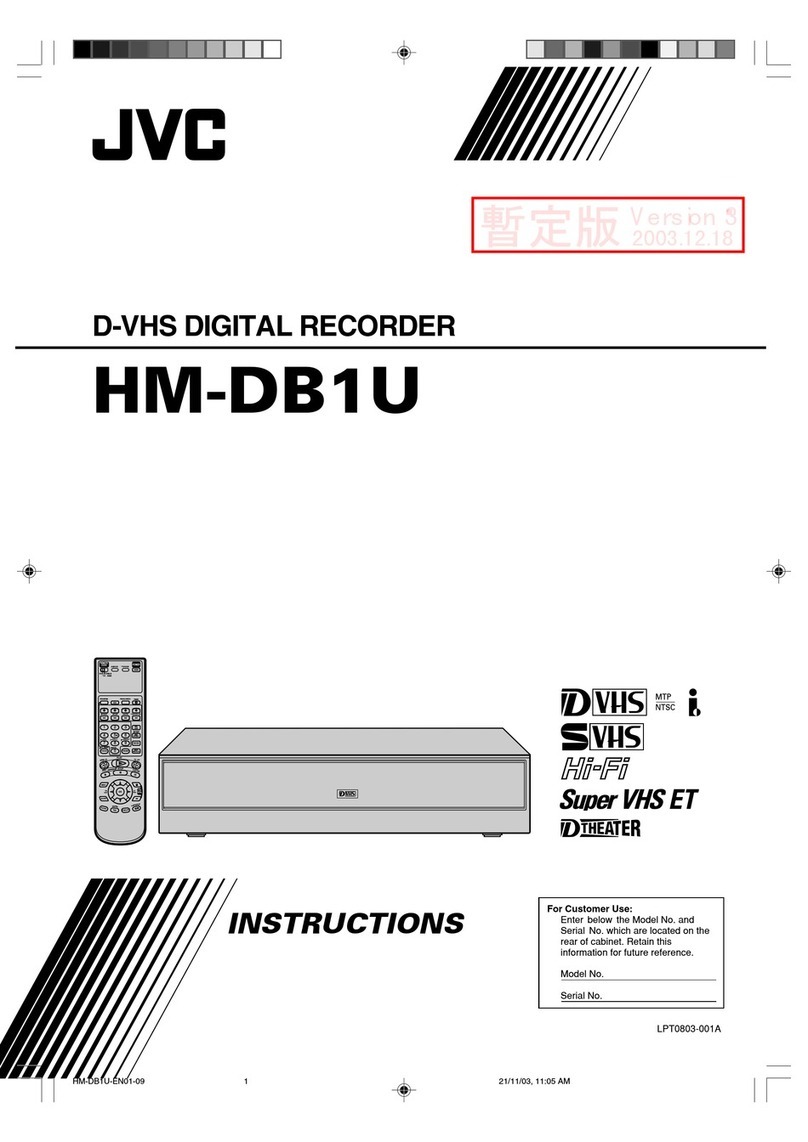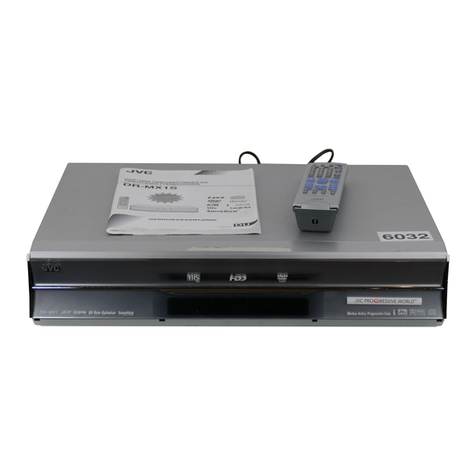
Important Safety Precautions
INSTRUCTIONS
1. DISASSEMBLY
1.1 Disassembly flow chart ......................................................... 1-1
1.2 How to read the disassembly and assembly ......................... 1-1
1.3 Disassembly/assembly method ............................................ 1-1
1.4 Service position ..................................................................... 1-4
1.4.1 How to set the “Service position” .................................... 1-4
1.5 Mechanism service mode ..................................................... 1-4
1.5.1 How to set the “Mechanism service mode” .................... 1-4
1.6 Jig RCU mode ....................................................................... 1-4
1.6.1 Setting the Jig RCU mode .............................................. 1-4
1.6.2 Setting the User RCU mode ........................................... 1-4
1.7 Emergency display function .................................................. 1-5
1.7.1 Displaying the EMG information ..................................... 1-5
1.7.2 Clearing the EMG history ............................................... 1-5
1.7.3 EMG content description ................................................ 1-6
1.7.4 EMG detail information <1> ............................................ 1-7
1.7.5 EMG detail information <2> ............................................ 1-8
2. MECHANISM ADJUSTMENT
2.1 Before starting repair and adjustment .................................. 2-1
2.1.1 Precautions ..................................................................... 2-1
2.1.2 Checking for proper mechanical operations ................... 2-1
2.1.3 Manually removing the cassette tape ............................. 2-1
2.1.4 Jigs and tools required for adjustment ............................ 2-2
2.1.5 Maintenance and inspection ........................................... 2-3
2.2 Replacement of major parts .................................................. 2-6
2.2.1 Before starting disassembling (Phase matching between
mechanical parts) .......................................................... 2-6
2.2.2 How to set the “Mechanism assembling mode” .............. 2-6
2.2.3 Cassette holder assembly .............................................. 2-6
2.2.4 Pinch roller arm assembly .............................................. 2-8
2.2.5 Guide arm assembly and press lever assembly ............. 2-8
2.2.6 A/C head ......................................................................... 2-8
2.2.7 Loading motor ................................................................. 2-8
2.2.8 Capstan motor ................................................................ 2-9
2.2.9 Pole base assembly (supply or take-up side) ................. 2-9
2.2.10 Rotary encoder ........................................................... 2-10
2.2.11 Clutch unit ................................................................... 2-10
2.2.12 Change lever assembly, direct gear, clutch gear and
coupling gear .............................................................. 2-10
2.2.13 Link lever ..................................................................... 2-11
2.2.14 Cassette gear, control cam and worm gear ................. 2-11
2.2.15 Control plate ................................................................ 2-11
2.2.16 Loading arm gear (supply or take-up side) and
loading arm gear shaft ................................................ 2-12
2.2.17 Take-up lever, take-up head and control plate guide .. 2-13
2.2.18 Capstan brake assembly ............................................ 2-13
2.2.19 Sub brake assembly (take-up side) ............................ 2-13
2.2.20
Main brake assembly (take-up side), reel disk
(take-up side) and main brake assembly (supply side)....
2-13
2.2.21 Tension brake assembly, reel disk (supply side) and
tension arm assembly ................................................. 2-14
2.2.22 Idler lever, idler arm assembly .................................... 2-14
2.2.23 Stator assembly .......................................................... 2-14
TABLE OF CONTENTS
Section Title Page Section Title Page
2.2.24 Rotor assembly ........................................................... 2-14
2.2.25 Upper drum assembly ................................................. 2-15
2.3 Compatibility adjustment ..................................................... 2-16
2.3.1 FM waveform linearity .................................................. 2-16
2.3.2 Height and tilt of the A/C head ...................................... 2-17
2.3.3 A/C head phase (X-value) ............................................ 2-17
2.3.4 Standard tracking preset .............................................. 2-18
2.3.5 Tension pole position .................................................... 2-18
3. ELECTRICAL ADJUSTMENT
3.1 Precaution ............................................................................. 3-1
3.1.1 Required test equipments .............................................. 3-1
3.1.2 Required adjustment tools .............................................. 3-1
3.1.3 Color (colour) bar signal, color (colour) bar pattern ........ 3-1
3.1.4 Switch settings and standard precautions ...................... 3-1
3.2 Servo circuit .......................................................................... 3-2
3.2.1 Switching point ............................................................... 3-2
3.2.2 Slow tracking preset ....................................................... 3-2
3.3 Video circuit........................................................................... 3-2
3.3.1 Auto picture initial setting ................................................ 3-2
3.4 Demodulator circuit ............................................................... 3-2
3.4.1 Separation ...................................................................... 3-2
4. CHARTS AND DIAGRAMS
NOTES OF SCHEMATIC DIAGRAM .......................................... 4-1
CIRCUIT BOARD NOTES ........................................................... 4-2
4.1 BOARD INTERCONNECTIONS ........................................... 4-3
4.2 MAIN (VIDEO/AUDIO) SCHEMATIC DIAGRAM .................. 4-5
4.3 MAIN (SYSCON) SCHEMATIC DIAGRAM ........................... 4-7
4.4 MAIN (SW. REG) SCHEMATIC DIAGRAM........................... 4-9
4.5 MAIN (TUNER) SCHEMATIC DIAGRAM .............................4-11
4.6 MAIN (FMA/DEMOD) SCHEMATIC DIAGRAM .................. 4-13
4.7
MAIN (FRONT) AND MINI FRONT SCHEMATIC DIAGRAMS .
4-15
4.8 MAIN (TERMINAL) SCHEMATIC DIAGRAM ...................... 4-17
4.9 ADV. JOG SCHEMATIC DIAGRAM [HR-VP790U] ............. 4-18
4.10 CONNECTION SCHEMATIC DIAGRAM ........................ 4-19
4.11 MAIN CIRCUIT BOARD .................................................. 4-21
4.12 REMOTE CONTROLLER SCHEMATIC DIAGRAM ....... 4-24
4.13 FDP GRID ASSIGNMENT AND ANODE CONNECTION 4-25
4.14 WAVEFORMS ................................................................. 4-26
4.15 VOLTAGE CHARTS ........................................................ 4-27
4.16 CPU PIN FUNCTION ...................................................... 4-28
4.17 SYSTEM CONTROL BLOCK DIAGRAM ........................ 4-29
4.18 VIDEO BLOCK DIAGRAM .............................................. 4-31
4.19 AUDIO BLOCK DIAGRAM .............................................. 4-33
5. PARTS LIST
5.1 PACKING AND ACCESSORY ASSEMBLY <M1> ............... 5-1
5.2 FINAL ASSEMBLY <M2> ..................................................... 5-2
5.3 MECHANISM ASSEMBLY <M4> ......................................... 5-4
5.4 ELECTRICAL PARTS LIST ................................................... 5-6
MAIN BOARD ASSEMBLY <03> ............................................... 5-6
A/C HEAD BOARD ASSEMBLY <12> ...................................... 5-11
MINI FRONT BOARD ASSEEMBLY(HR-VP690U/U(C))<28> .5-11
ADV.JOG BOARD ASSEEMBLY(HR-VP790U/U(C))<38> .......5-11
LOADING MOTOR BOARD ASSEMBLY <55> ........................5-11
C.BOX/R.PAUSE BOARD ASSEMBLY(HR-VP790U/U(C)<99> ...
5-11
The following table lists the differing points between Models (HR-VP690U/U(C) and HR-VP790U/U(C)) in this series.
HR-VP690U/U(C) HR-VP790U/U(C)
JOG/SHUTTLE NOT USED USED
FOOT LINE – GOLD
REAR VIDEO/AUDIO IN NOT USED USED
VCR PLUS+ VCR+ VCR+ C3
REC LINK/INPUT NOT USED USED/L1
CABLE BOX OR DBS.BOX OR SAT CTL
NOT USED USED
PAUSE/AV COMPU TERMINAL NOT USED USED
CABLE MOUSE TERMINAL NOT USED USED
CABLE MOUSE NOT USED COUPON






































